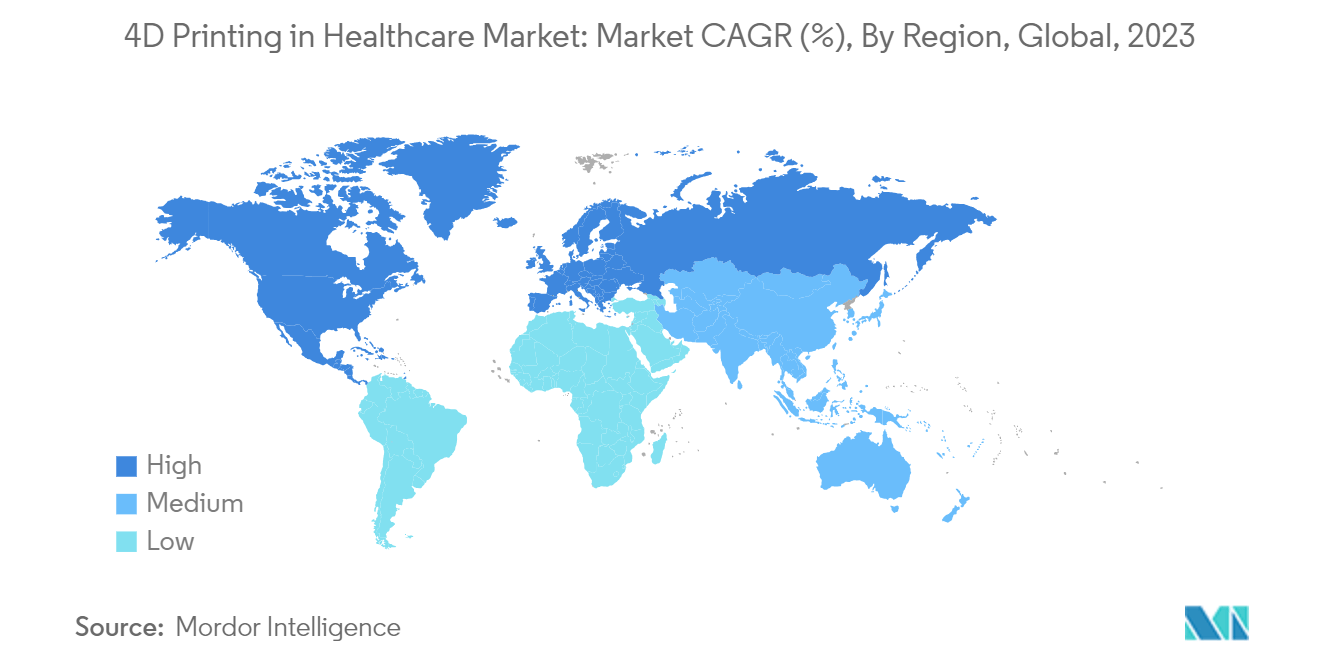Market Trends of 4D Printing In Healthcare Industry
The Tissue Engineering Segment is Expected to Hold a Significant Market Share Over the Forecast Period
Tissue engineering uses a combination of engineering, cells, materials methods, and appropriate physicochemical and biochemical factors to restore, maintain, improve, or replace different types of biological tissues. Tissue engineering is used to assemble functional constructs that restore, improve, or maintain damaged tissues or whole organs. Increasing investments in tissue engineering and rising strategic activities, such as the launch of new tissue-engineered products by key market players, are expected to drive the segment during the forecast period.
The increasing investments in tissue engineering drive the research activities for the development of 4D printing technologies to create constructs that transform into the desired structure upon implantation, facilitating better integration with the surrounding tissue and promoting cell growth and differentiation. Hence, the increasing investments in tissue engineering are expected to drive research activities in 4D printing and, thereby, the market over the forecast period.
For instance, in July 2024, 4D Medicine, a spin-out from the Universities of Birmingham and Warwick, raised EUR 3.4 million (USD 4.4 million) in a Series A investment. This funding will enable the company to complete pre-clinical testing of its first product range and seek clearance from the US FDA for entry into the US market. Its product, 4Degra, is a resorbable biomaterial that is being used to develop implants such as orthopedic devices or soft tissue scaffolds to help patients recover from surgery or injuries. Hence, such investments by tissue engineering companies are expected to drive the segment over the forecast period.
Furthermore, the various clinical applications offered by 4D printing in tissue engineering are also expected to increase its adoption. According to an article published in Advanced Materials in April 2024, 4D bio-printing has the potential to revolutionize tissue engineering by enabling the creation of functional tissues and organs. The technology's scalability ranges across various length scales. Hence, due to the various clinical advantages of 4D bio-printing, the segment is expected to witness growth over the forecast period.
Thus, the increasing investments in tissue engineering and various clinical advantages provided by 4D bio-printing in tissue engineering are expected to drive the segment over the forecast period.

North America is Expected to Hold a Significant Market Share Over the Forecast Period
North America's 4D printing market is expected to witness significant growth due to the presence of companies that manufacture 4D printing devices and software, increasing dental diseases in the region, growing organ transplantation, and increasing research activities in the development of 4D printing technologies.
The increasing organ transplantation in North America is raising the utilization of 4D printing to produce tissue that is able to transform its properties based on internal or external stimuli over time, similar to natural tissue. According to the Canadian Institute of Health Information January 2024 update, as of December 2023, a total of 3,427 Canadians were on wait lists to receive a transplant; 60% were active on wait lists, and 40% were on hold for a short period. Hence, the rising demand for organ transplantation accelerates research activities in 4D bioprinting, which is expected to drive the market over the forecast period.
Furthermore, the increasing investments in bioprinting increase the accessibility of 4D printing in healthcare. For instance, in July 2023, 3D BioFibR, a Canadian company, raised over USD 3.52 million to bring its bio-printed collagen fiber products to market. The funding will advance the company’s capabilities in manufacturing high-quality collagen fibers, highlighting the evolving landscape of bioprinting as it progresses from research to market-ready solutions. Hence, such investments are expected to increase the accessibility to 4D-printed biological products in the market, which is expected to drive the market over the forecast period.
Therefore, the increasing demand for organ transplantation and investments in bioprinting technologies are expected to drive the market in North America over the forecast period.


